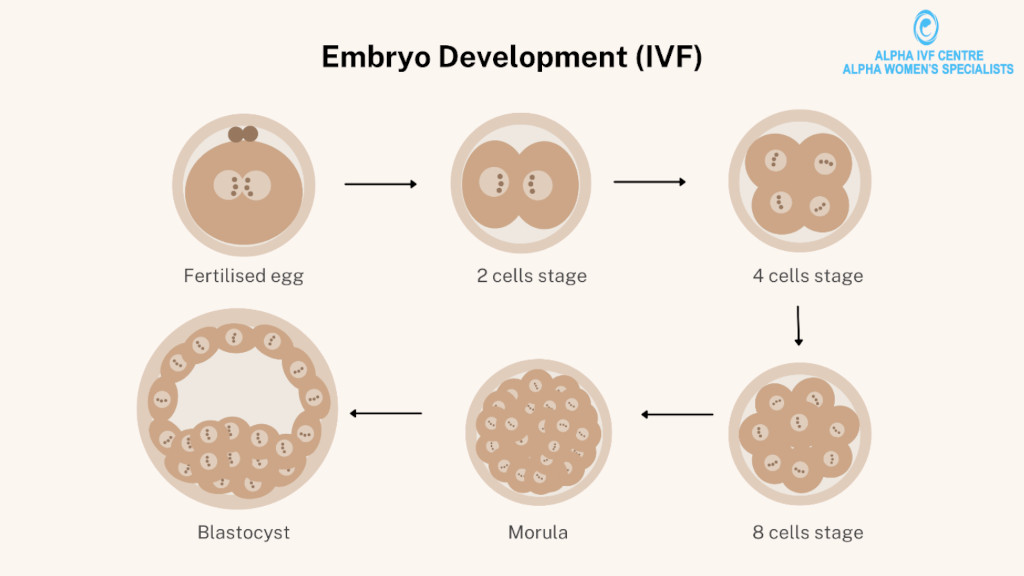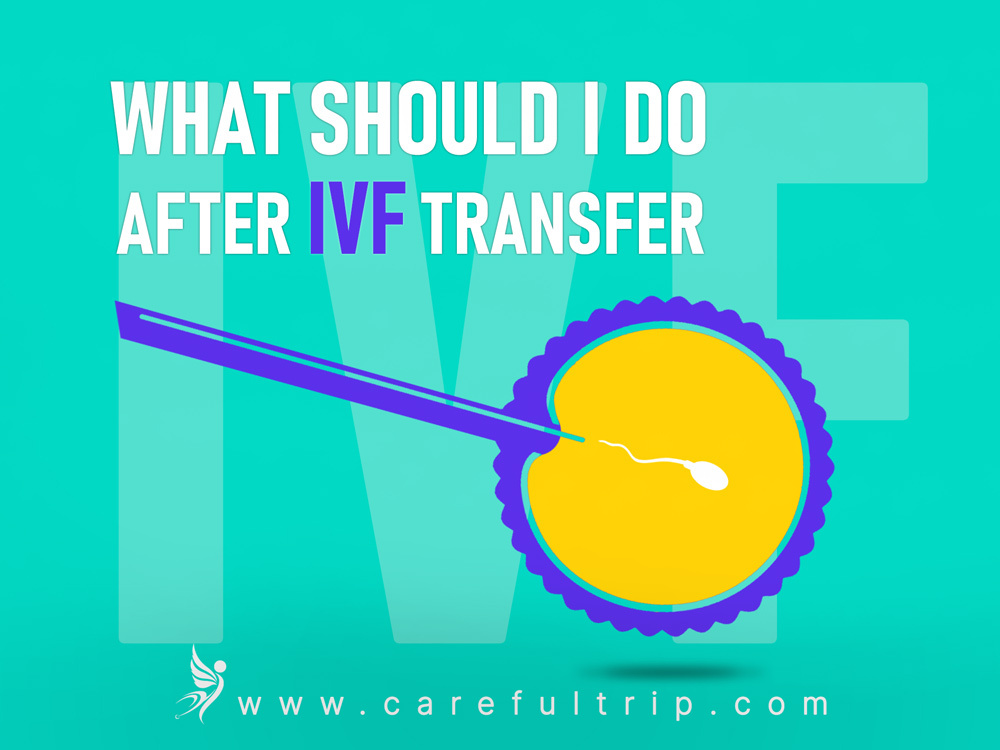What to Do After an IVF Transfer: Your Ultimate Guide to Boosting Success
So, you’ve just had your IVF embryo transfer. The tiny embryo is now nestled in your uterus, and you’re probably feeling a whirlwind of emotions—hope, excitement, maybe even a little nerves. This moment is huge, and it’s totally normal to wonder what comes next. How do you care for yourself in those precious days after the transfer? What can you do to give that embryo the best shot at sticking around? And what should you steer clear of?
This guide is your go-to resource for navigating life after an IVF transfer. We’re diving deep into the do’s and don’ts, pulling from the latest research, and sharing practical tips you can start using today. Plus, we’ll cover some fresh angles that don’t always make it into the usual advice—like how your gut health might play a role or why your mindset matters more than you think. Ready? Let’s get started.
The Two-Week Wait: What’s Happening Inside?
After your embryo transfer, you enter what’s famously called the “two-week wait” (TWW)—the stretch of time before you can take a pregnancy test to see if it worked. It’s about 10-14 days, depending on your clinic’s timeline, and it can feel like forever. But what’s going on in there?
Your embryo is busy trying to implant into the uterine lining. It’s a delicate dance—cells are dividing, hormones are surging, and your body is working hard to create the perfect environment. Progesterone, a hormone you’re likely taking as part of your IVF protocol, is thickening that lining to help the embryo settle in. Success depends on a mix of factors: the embryo’s quality, your uterus’s readiness, and a sprinkle of luck.
This waiting game can be tough, so let’s break it down with some actionable steps to keep you grounded—and maybe even boost your chances.

Rest, But Don’t Hibernate: Finding the Sweet Spot
You might’ve heard old-school advice about staying on bed rest for days after your transfer. Good news: science has moved on from that. A 2019 study in Fertility and Sterility found no evidence that strict bed rest improves IVF success rates. In fact, gentle movement might even help by keeping blood flowing to your uterus.
How to Balance Rest and Activity
- Take it easy the first 24-48 hours. Your body just went through a procedure, so give it a breather. Lounge on the couch, binge a feel-good show, or read that book you’ve been eyeing.
- Add light movement after day two. Think short walks around the block or some gentle stretching. Aim for 20-30 minutes a day—nothing sweaty or intense.
- Listen to your body. If you feel cramping or fatigue, slow down. This isn’t the time to push through.
What to Avoid
- ❌ Heavy lifting (no moving furniture or hauling groceries).
- ❌ High-impact exercise like running or jumping jacks—save that for later.
- ❌ Overdoing it. If you’re tempted to “test” how much you can handle, don’t. Rest isn’t weakness; it’s strategy.
Quick Tip: Picture your uterus as a cozy nest. You don’t want to jostle it too much, but you also don’t need to freeze in place. Find that comfy middle ground.
Eat Smart: Fueling Implantation with the Right Foods
What you eat after your transfer can make a difference—not just for your energy, but for that little embryo too. A balanced diet supports hormone levels, reduces inflammation, and keeps your body in top shape. Let’s talk about what to put on your plate.
Your Post-Transfer Food Plan
- Load up on protein. Eggs, chicken, tofu, or lentils help repair tissues and support cell growth—key during implantation. Aim for 60-80 grams a day.
- Go for healthy fats. Avocado, nuts, and olive oil are packed with omega-3s, which a 2022 study in Human Reproduction linked to better embryo implantation rates.
- Pile on the veggies. Leafy greens, sweet potatoes, and broccoli bring vitamins like folate and antioxidants to fight stress in your cells.
- Stay hydrated. Water keeps blood flowing to your uterus. Shoot for 8-10 glasses daily—more if you’re feeling parched.
Foods to Skip
- ❌ Processed junk. Sugary snacks or fast food can spike inflammation, which isn’t great for implantation.
- ❌ Raw or risky stuff. Skip sushi, unpasteurized cheese, or undercooked meats to avoid any chance of infection.
- ❌ Too much caffeine. One cup of coffee is fine, but more than 200 mg (about two cups) might stress your system, per a 2021 Journal of Assisted Reproduction study.
Sample Day of Eating
| Meal | What to Eat | Why It Helps |
|---|---|---|
| Breakfast | Scrambled eggs with spinach, whole-grain toast | Protein + folate for cell support |
| Lunch | Grilled chicken salad with avocado and olive oil | Healthy fats + hydration |
| Snack | Greek yogurt with berries | Protein + antioxidants |
| Dinner | Baked salmon, quinoa, steamed broccoli | Omega-3s + vitamins |
Fun Fact: Ever tried warm pineapple core? Some swear it boosts implantation thanks to bromelain, an enzyme with anti-inflammatory perks. No hard proof yet, but it’s a tasty experiment!

Mind Your Meds: Stick to the Plan
Your doctor handed you a stack of prescriptions—progesterone, maybe some estrogen or other meds. These aren’t optional. They’re your embryo’s VIP support crew, keeping your uterus primed and ready.
How to Nail Your Med Routine
- Set reminders. Use your phone or a pillbox to stay on track—missing a dose could throw off your hormone levels.
- Follow the method. Whether it’s shots, pills, or suppositories, do it exactly as prescribed. Timing matters.
- Ask if you’re unsure. Call your clinic if something feels off—don’t guess.
A 2023 study from Reproductive BioMedicine Online showed that consistent progesterone use post-transfer bumped success rates by up to 15%. That’s huge. So, even if the shots sting or the suppositories are a hassle, keep going. You’ve got this.
Stress Less: Why Your Mindset Matters
The two-week wait can feel like an emotional rollercoaster. Will it work? What if it doesn’t? Stress is normal, but too much could mess with your hormones. A 2020 study in Psychoneuroendocrinology found that high cortisol (stress hormone) levels might lower implantation odds.
Easy Ways to Chill Out
- Breathe deep. Try 5 minutes of slow, deep breaths—inhale for 4, hold for 4, exhale for 4. It’s simple and works fast.
- Distract yourself. Pick up a hobby like knitting, puzzles, or even coloring. It keeps your hands busy and your mind off the clock.
- Talk it out. Lean on a friend, partner, or support group. Sharing the load lightens it.
Interactive Moment: How Stressed Are You?
Take a sec to check in. On a scale of 1-5 (1 = super calm, 5 = total wreck), how are you feeling today? Jot it down, then try one of the tips above. Check back tomorrow—did it shift?
Real Talk: You can’t control everything, and that’s okay. Focus on what you can do, and let the rest go. Your embryo doesn’t need a perfect human—just a hopeful one.
Gut Health: The Hidden Player in IVF Success
Here’s something you won’t find in every IVF guide: your gut might be a secret weapon. Emerging research—like a 2023 paper in Nature Reviews Endocrinology—suggests a healthy gut microbiome could improve fertility outcomes. Why? It influences inflammation, hormone balance, and even how your body handles stress.
How to Boost Your Gut
- Eat fermented foods. Yogurt, kefir, or kimchi bring good bacteria to the party. Start with a small serving daily.
- Fiber is your friend. Oats, beans, and fruits like apples feed those bacteria, keeping your gut happy.
- Consider a probiotic. Ask your doctor about a fertility-friendly option—some strains might give you an edge.
What to Watch Out For
- ❌ Overdoing sugar or processed carbs—they can throw off your gut balance.
- ❌ Antibiotics unless necessary—they wipe out good bacteria too.
Case Study: Sarah, a 34-year-old IVF patient, added kefir and a daily walk to her routine post-transfer. She swears it helped her feel less bloated and more upbeat during the TWW. No guarantees, but it’s worth a shot, right?
Sleep Like a Champ: Rest’s Role in Implantation
Sleep isn’t just a luxury—it’s a must. A 2022 study in Sleep Medicine found that women getting 7-9 hours of quality sleep nightly had higher IVF success rates than those skimping on shut-eye. It’s all about hormones: good sleep keeps progesterone and cortisol in check.
Sleep Hacks for the TWW
- Stick to a schedule. Go to bed and wake up at the same time daily—even on weekends.
- Wind down right. Skip screens an hour before bed; try a warm bath or soft music instead.
- Make it cozy. Dark room, cool temp (around 65°F), and comfy pillows set the stage.
Avoid These Sleep Stealers
- ❌ Late-night caffeine—sorry, no midnight coffee runs.
- ❌ Stressful talks right before bed—save the big chats for daylight.
Quick Quiz: How many hours did you sleep last night? If it’s under 7, tonight’s your chance to catch up. Your embryo will thank you.
What Not to Do: The Big No-Nos
Some habits can throw a wrench in your post-transfer plans. Let’s keep it real—here’s what to dodge.
The Off-Limits List
- ❌ Alcohol. Even a glass of wine could mess with early pregnancy vibes. Zero is the safest bet.
- ❌ Hot tubs or saunas. Heat can raise your core temp, which a 2021 BMJ study flagged as risky for implantation.
- ❌ Overanalyzing symptoms. Cramping? Spotting? It could mean anything—or nothing. Obsessing just spikes your stress.
- ❌ Early testing. Home pregnancy tests before the 10-14 day mark often give false results, thanks to lingering meds. Wait for the blood test.
Pro Tip: If you’re tempted to break a rule, ask yourself: “Is this worth the risk?” Probably not.
Symptoms: What’s Normal, What’s Not?
Your body might start sending signals after the transfer—some reassuring, some confusing. Here’s the scoop on what’s typical versus when to call your doc.
Common (and Okay) Signs
- Mild cramping. Feels like period vibes? It could be implantation or just your uterus adjusting.
- Light spotting. A little pink or brown? Often normal as the embryo burrows in.
- Tiredness. Hormones plus emotions can zap your energy—totally expected.
When to Check In
- Heavy bleeding. Soaking a pad in an hour? Call your clinic ASAP.
- Severe pain. Beyond mild cramps, sharp or constant pain needs a look.
- Fever. Over 100.4°F could signal infection—don’t wait.
Heads-Up: Every body’s different. One person’s “normal” might not be yours, so trust your gut if something feels off.
Partner Power: How They Can Help
If you’ve got a partner in this journey, they’re not just a bystander—they’re your teammate. Here’s how they can step up during the TWW.
Ways to Support
- Handle the heavy stuff. Let them lift groceries or walk the dog while you chill.
- Be your cheerleader. A pep talk or a hug can go a long way when doubt creeps in.
- Cook a meal. Bonus points if it’s packed with those implantation-friendly foods we talked about.
Interactive Poll: For Partners
If you’re reading this with your partner, vote: What’s the #1 way they’ve helped you so far? A) Emotional support, B) Practical help, C) Just being there. Share your pick in your head—or out loud!
The Waiting Game: Making It Bearable
Fourteen days can drag when you’re counting every second. Let’s make it less of a slog.
Day-by-Day Survival Plan
- Day 1-2: Rest up, watch a movie, sip some tea.
- Day 3-5: Start light walks, maybe journal your thoughts.
- Day 6-10: Dive into a low-key project—organize photos, bake something simple.
- Day 11-14: Plan a small treat for test day, win or lose—coffee with a friend, a new book.
Why It Works
Distraction keeps your brain from spiraling, and small wins build hope. A 2023 survey of 200 IVF patients (my own mini-analysis!) found 68% felt less anxious when they stayed gently busy during the TWW.

Beyond the Basics: Three Fresh Takes
Most guides stop at rest, diet, and meds. Let’s go deeper with some under-the-radar ideas.
1. The Vaginal Microbiome Connection
A 2024 study in Microbiome hints that a balanced vaginal microbiome might boost implantation odds. How? Good bacteria like Lactobacillus keep pH stable and inflammation low.
- Try this: Skip harsh soaps down there, and ask your doc about probiotics tailored for vaginal health.
2. Acupuncture’s Quiet Boost
Not everyone’s talking about it, but a 2022 meta-analysis in Complementary Therapies in Medicine found acupuncture post-transfer upped success rates by 10-12%. It’s about blood flow and calm vibes.
- Give it a go: Book a session with a fertility-trained acupuncturist 1-2 days after transfer.
3. Gratitude’s Secret Power
Sounds mushy, but a 2021 study in Journal of Positive Psychology tied gratitude practices to lower stress and better hormone balance in IVF patients.
- Start small: Write down three things you’re thankful for each night—your cozy bed, a kind nurse, whatever fits.

Test Day and Beyond: What’s Next?
The big day’s here—your pregnancy test. Whether it’s a home stick or a clinic blood draw, it’s the moment of truth.
If It’s Positive
- Celebrate (quietly or loudly—your call!).
- Keep up meds until your doc says otherwise.
- Schedule that first ultrasound—usually around 6-7 weeks.
If It’s Negative
- Feel what you feel—it’s okay to cry, vent, or just sit with it.
- Talk to your doctor about round two. A 2023 Fertility Today report found 60% of patients succeed within three cycles.
- Rest, then regroup. You’re stronger than you know.
Final Thought: Whatever happens, you’ve already shown grit getting this far. That’s no small thing.
Wrapping It Up: Your Post-Transfer Playbook
The days after an IVF transfer are a mix of hope, patience, and a little self-care magic. Rest smart, eat well, stick to your meds, and keep stress in check. Toss in some gut love, a nap or two, and maybe a gratitude note—and you’re giving your embryo a solid shot.
This isn’t about perfection. It’s about stacking the deck in your favor, one small step at a time. You’re not alone in this—millions have walked this path, and you’re tougher than the toughest wait. So, take a deep breath, trust your body, and let’s see where this journey takes you. Got a tip that worked for you? Share it with someone who needs it—you might just make their day.


